
Howard Staunton was an English chess master who is generally regarded as the world's strongest player from 1843 to 1851, largely as a result of his 1843 victory over Pierre Charles Fournier de Saint-Amant. He promoted a chess set of clearly distinguishable pieces of standardised shape – the Staunton pattern promulgated by Nathaniel Cooke – that is still the style required for competitions. He was the principal organiser of the first international chess tournament in 1851, which made England the world's leading chess centre and caused Adolf Anderssen to be recognised as the world's strongest player.
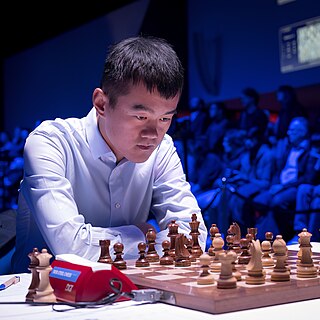
The World Chess Championship is played to determine the world champion in chess. The current world champion is Ding Liren, who defeated his opponent Ian Nepomniachtchi in the 2023 World Chess Championship. Magnus Carlsen, the previous world champion, had declined to defend his title.

Karl Ernst Adolf Anderssen was a German chess master. He won the great international tournaments of 1851 and 1862, but lost matches to Paul Morphy in 1858, and to Wilhelm Steinitz in 1866. Accordingly, he is generally regarded as having been the world's leading chess player from 1851 to 1858, and leading active player from 1862 to 1866, although the title of World Chess Champion did not yet exist.

The Evergreen Game is a famous chess game won by Adolf Anderssen against Jean Dufresne in 1852.
The Evans Gambit is a chess opening characterised by the moves:

Johannes Hermann Zukertort was a Polish-born British-German chess master. He was one of the leading world players for most of the 1870s and 1880s, but lost to Wilhelm Steinitz in the World Chess Championship 1886, which is generally regarded as the first World Chess Championship match. He was also defeated by Steinitz in 1872 in an unofficial championship.

Tassilo, Baron von Heydebrand und der Lasa was a German chess master, chess historian and theoretician of the nineteenth century, a member of the Berlin Chess Club and a founder of the Berlin Chess School.
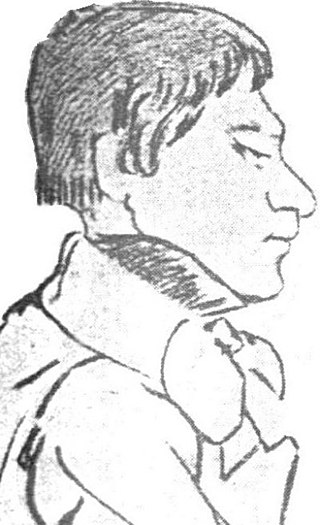
Lionel Adalbert Bagration Felix Kieseritzky was a Baltic German chess master and theoretician, known for his contributions to chess theory, as well for a game he lost against Adolf Anderssen, known as the "Immortal Game". Kieseritzky's name became associated with several openings and opening variations, such as the Kieseritzky Gambit, Kieseritzky Attack, and the Boden–Kieseritzky Gambit.
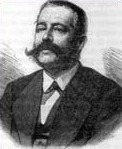
Jean Dufresne was a German chess player and chess composer. He was a student of Adolf Anderssen, to whom he lost the "Evergreen game" in 1852.
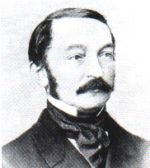
Dr Ludwig Erdmann Bledow was a German chess master and chess organizer . In 1846 he founded the first German chess magazine, Schachzeitung der Berliner Schachgesellschaft, which would later take the name Deutsche Schachzeitung.
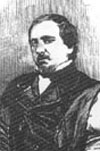
Ernst Karl Falkbeer was an Austrian chess master and journalist.

Baron Ignatz von Kolisch, also Baron Ignaz von Kolisch (German) or báró Kolisch Ignác (Hungarian), was a merchant, journalist and chess master with Jewish roots.
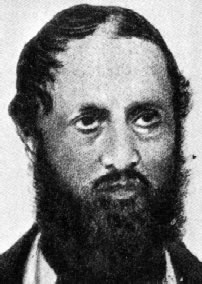
József Szén was a Hungarian chess master.
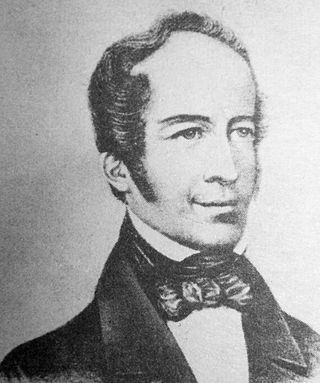
Wilhelm Hanstein was a German chess player and writer. He was also a civil servant.

London 1851 was the first international chess tournament. The tournament was conceived and organised by English player Howard Staunton, and marked the first time that the best chess players in Europe would meet in a single event. Adolf Anderssen of Germany won the sixteen-player tournament, earning him the status of the best player in the world.

The Berlin Pleiades was a group of seven masters of German chess in the 19th century. They are named after the star constellation the Pleiades.
Frederick Horace Deacon was a British chess master. He is mainly notable for spurious claims to have drawn against Paul Morphy, making himself both notorious and unpopular.
Philipp Hirschfeld was a German chess player and theoretician.
Louis Eichborn was a banker and a strong amateur chess player who played a series of casual games against Adolf Anderssen who was among the best players in the world in the 1850s. Almost all of his known games are wins against Anderssen, found in Eichborn's papers after his death.
Alexander Ferdinand von der Goltz (1819–1858) was a German chess master.














